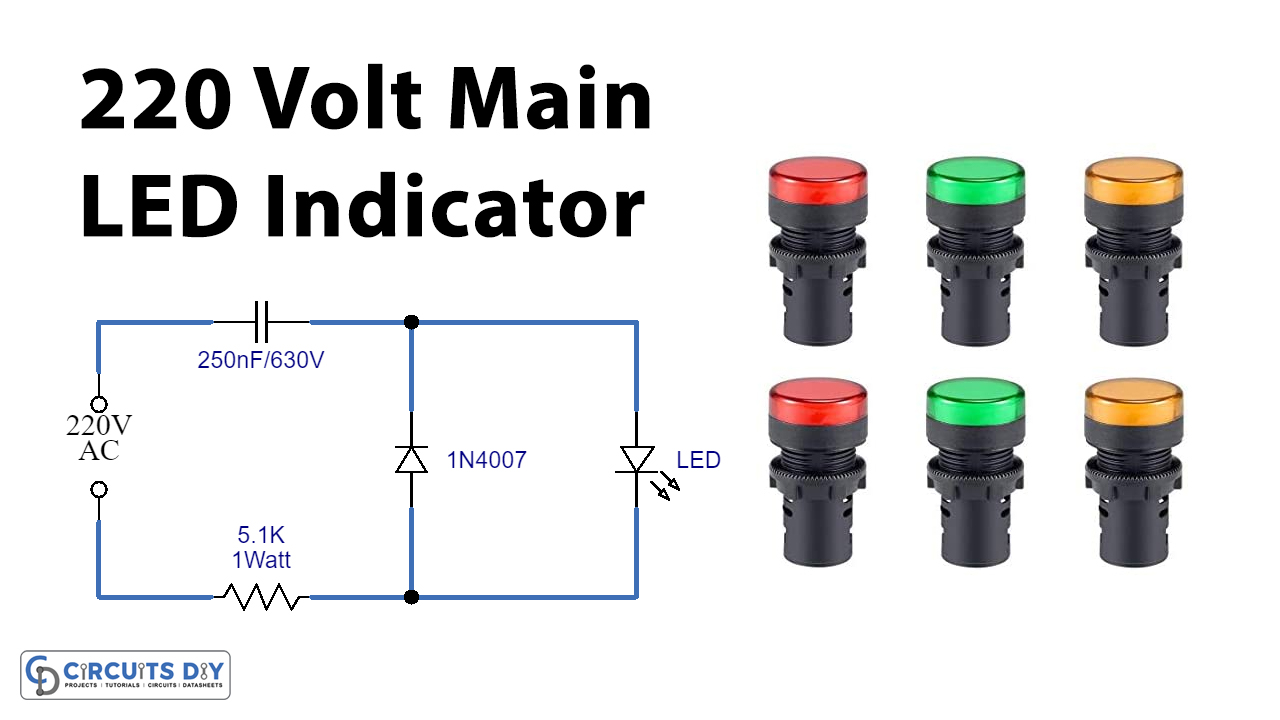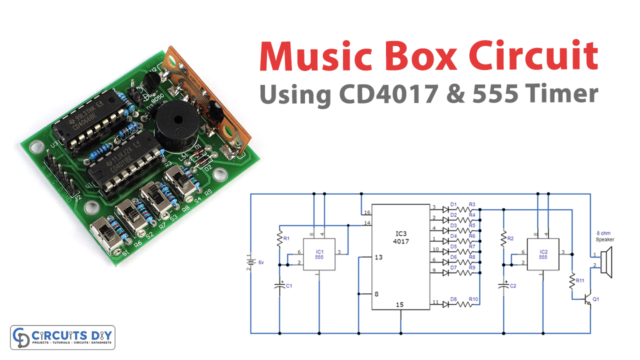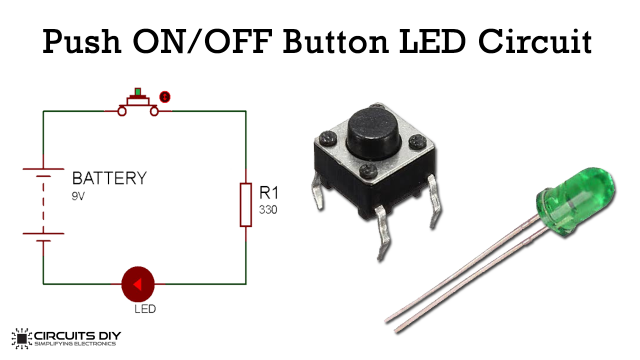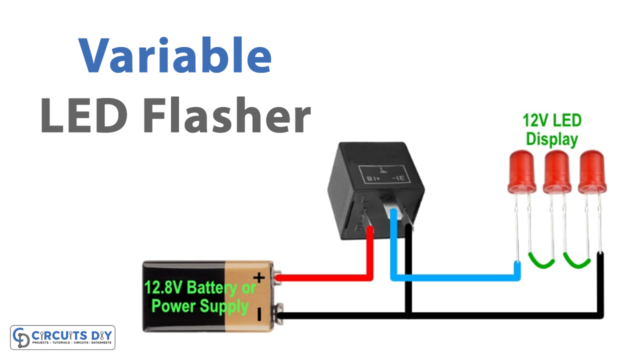We have numerous approaches to highlight or indicate an AC mainline. Previously, when 220VAC is given in the system wires, the neon light is used to indicate the main. Nowadays, the AC mains voltage indicator circuit with LED is commonly utilized. Therefore, it might be an ideal decision if you have more typical parts in your store. It likewise encourages you to save your cash on extra billings and maintenance.
Here is a valuable circuit DIY tutorial of a simple 220V AC main indicator LED circuit. The circuit can work a single 3.6V LED straightforwardly from 220V AC. It will likewise demonstrate the nearness of the AC mains voltage. Meanwhile, it tends to be utilized with numerous DIY projects or independently to show the presence of AC.
The circuit is utilizing just four segments, which are a 250nF/630V capacitor, 1N4004 diode, LED, and a 5.1K/1 watt resistor.
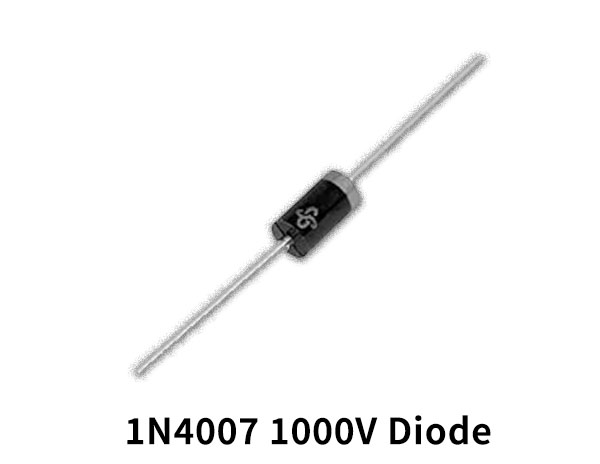
Hardware Components
| S.no | Component | Value | Qty |
|---|---|---|---|
| 1. | LED | – | 1 |
| 2. | Diode | 1N4007 | 1 |
| 3. | Resistor | 5.1K 1Watt | 1 |
| 4. | Ceramic Capacitor | 250nF / 630V | 1 |
220V Main Indicator LED Circuit

Working Explanation
Meanwhile, this AC primary indicator circuit has become increasingly more mainstream for use as a light indicator on account of its ease and longer life. Sadly, the LED works at low voltages of only 5V. Therefore, you have to utilize a resistor in series. However, it’s not a smart thought to restrain the current at higher voltages using a resistor because the dispersed power will be excessively high, and the resistor will consume.
Therefore, it is recommended to utilize a LED at 220V by having a capacitor in series to restrain the current. Moreover, the bit of leeway is that the capacitor won’t heat up! The job of the diode is to shield the LED from high voltages. During the positive half-cycle, D1 limits the voltage on LED and R1 at 2.7 Volts. On the contrary half-cycle D1 acts like a typical diode forestalling a high increment of the voltage.
The circuit isn’t utilizing any force flexibly. It is legitimately associated with the mains. In this way, don’t contact it when it is powered or associated with the mains gracefully. This circuit must be put in a proper nook.
Applications and Uses
- Use to indicate high power AC main


